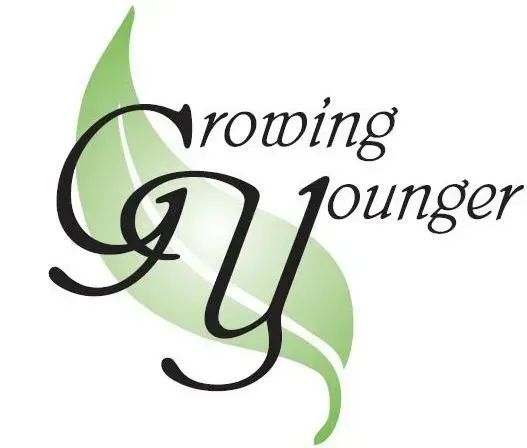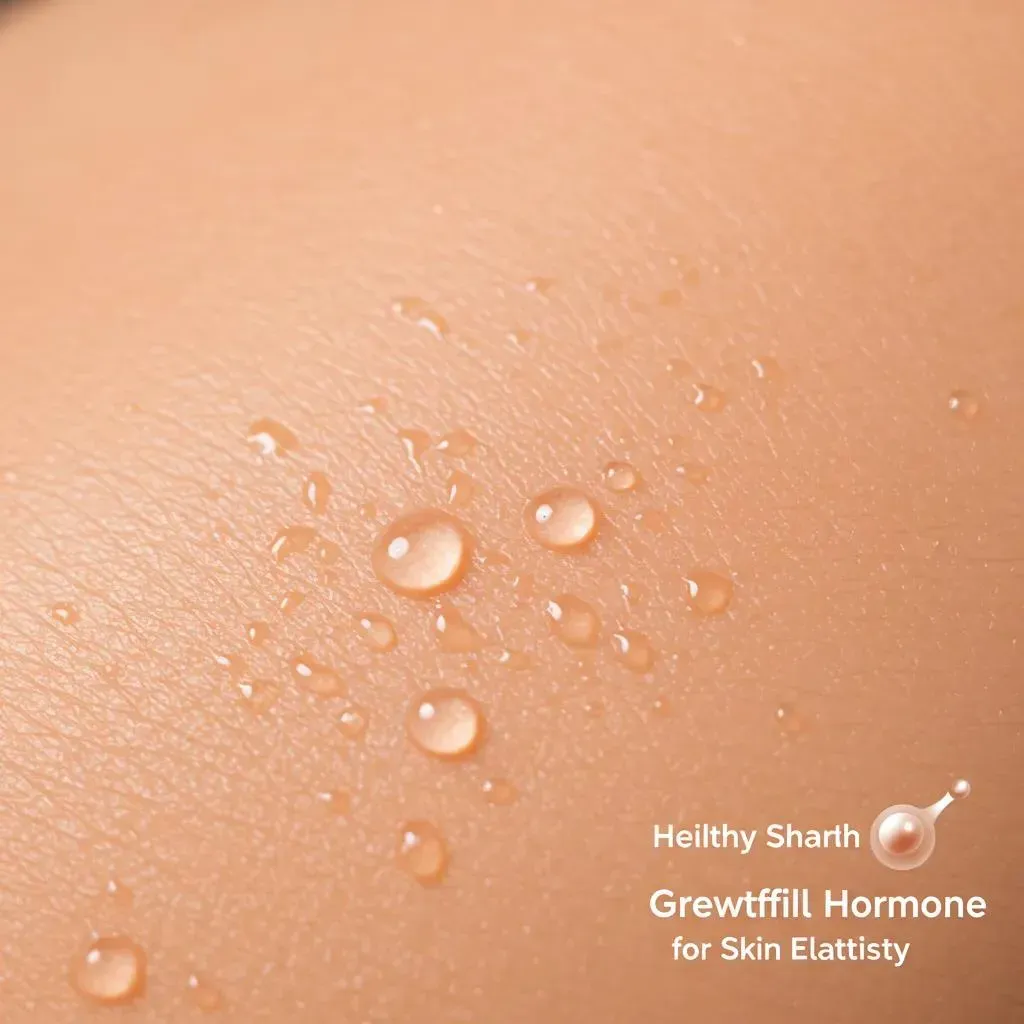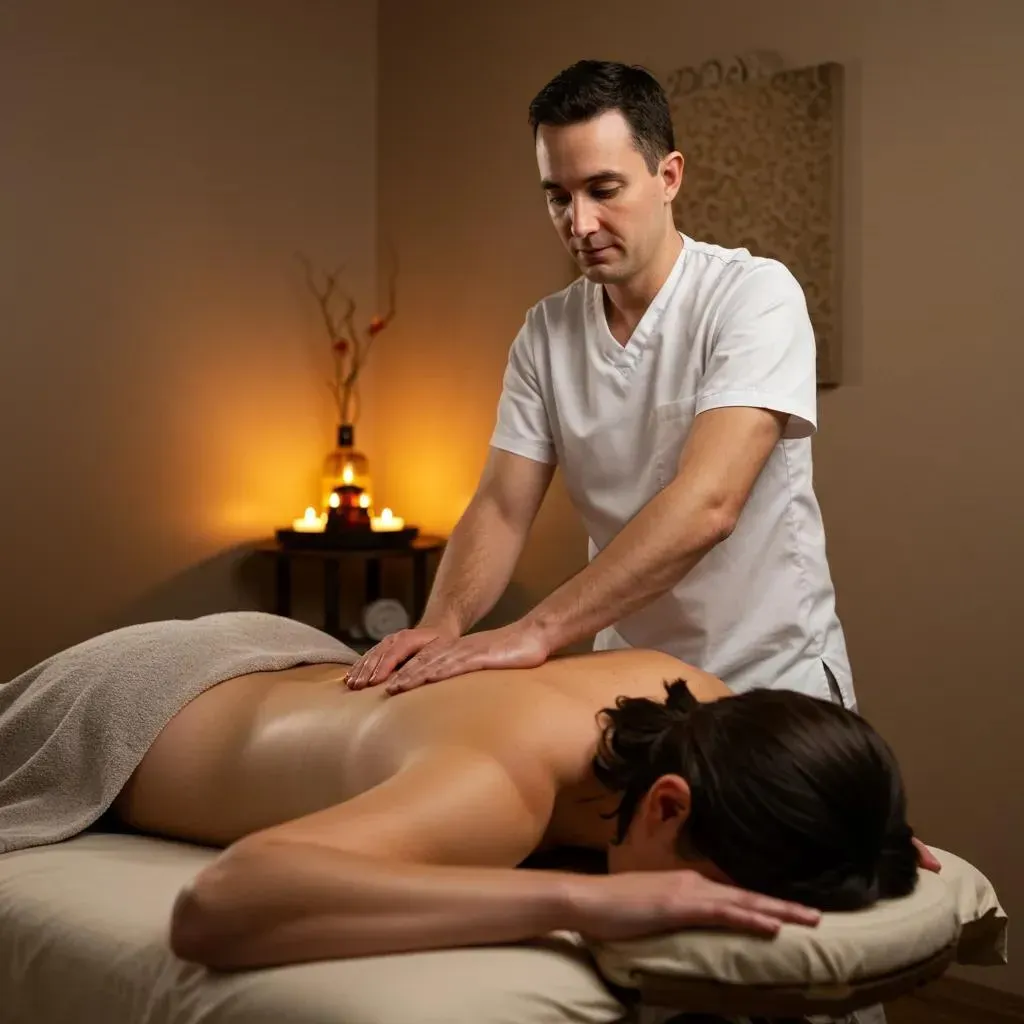Discover the Surprising Benefits of HGH Therapy Today
HGH Therapy Benefits You Didn't Know About: Unlocking Anti-Aging, Weight Loss, and Wellness

Human Growth Hormone (HGH) therapy is a medical approach that restores hormonal balance to support tissue repair, metabolism, and vitality. Recent clinical perspectives highlight benefits beyond simple growth signaling. This article explains how HGH works at the biological level (HGH → IGF-1 → cellular regeneration), outlines surprising anti-aging and metabolic effects, and reviews practical considerations for adults considering therapy. Many adults experience gradual declines in muscle mass, skin quality, and energy as pituitary HGH output falls, and targeted replacement can reverse or mitigate some of those changes when medically indicated. Readers will learn what HGH does physiologically, the evidence-backed anti-aging and body-composition benefits, realistic expectations for energy and cognition, candidacy and testing pathways, and how a local clinic-based program typically operates. After a clear clinical primer, the article briefly explains personalized HGH pellet programs available through Growing Younger Clinic and invites readers to a free consultation to explore individualized options. Throughout, this guide uses current research perspectives and practical, patient-centered steps for safe, monitored therapy.
What Is HGH Therapy and How Does It Work?
HGH therapy replaces or augments endogenous human growth hormone to restore downstream signaling that promotes tissue repair, protein synthesis, and metabolic regulation. The central mechanism is pituitary-derived HGH stimulating hepatic and peripheral production of insulin-like growth factor 1 (IGF-1), which mediates many anabolic and regenerative effects across skin, muscle, and bone. Clinically, therapy aims to raise IGF-1 into an age-appropriate therapeutic range while minimizing adverse metabolic effects through individualized dosing and monitoring. Understanding this core axis clarifies why HGH can affect diverse systems from dermal collagen to visceral fat, and it sets up the comparison of delivery methods clinicians choose based on lifestyle and safety considerations.
What Is Human Growth Hormone and Its Role in the Body?
Human Growth Hormone is a peptide hormone produced by the anterior pituitary that regulates growth, cellular turnover, and metabolic processes across the lifespan. In adults, HGH supports protein synthesis, lipolysis, bone remodeling, and repair mechanisms, and normal levels help maintain lean body mass and tissue integrity. Age-related decline in HGH contributes to reduced muscle mass, increased adiposity, and slower wound healing, making the hormone clinically relevant for symptomatic adults. Recognizing these core roles provides the foundation for targeted therapies intended to restore physiologic function rather than to pursue supra-physiologic enhancement.
How Does HGH Therapy Stimulate IGF-1 and Cellular Regeneration?
HGH binds receptors in the liver and peripheral tissues to upregulate IGF-1 production, and IGF-1 then acts through local and systemic pathways to increase protein synthesis, cell proliferation, and extracellular matrix production. This cascade enhances collagen deposition in dermal fibroblasts, supports myocyte repair, and stimulates osteoblastic activity in bone, which together promote tissue regeneration. Clinically, measuring IGF-1 provides a practical biomarker of therapeutic effect, and rising IGF-1 correlates with improved tissue-specific outcomes when dosing is carefully titrated. Understanding this cascade explains why monitoring and adjusting therapy is essential for balancing benefits and metabolic risk.
What Types of HGH Therapy Are Available?
Therapeutic approaches include subcutaneous HGH injections, long-acting peptide analogues (such as secretagogues), and implanted bioidentical hormone pellets, with each option offering distinct administration patterns and monitoring needs. Injections provide precise titration and daily control, peptides mimic endogenous secretion by stimulating pituitary release, and pellets offer steady release over months for patients who prioritize convenience. Selection depends on clinical goals, patient preference, comorbidities, and monitoring feasibility, and a clinician-led selection process ensures the method aligns with safety and lifestyle considerations.
What Are the Key Anti-Aging Benefits of HGH Therapy?
HGH therapy produces measurable anti-aging effects through mechanisms that restore extracellular matrix integrity, improve tissue turnover, and support systemic regeneration. The principal benefits include enhanced skin elasticity via collagen synthesis, accelerated wound repair through increased cell proliferation, and potential improvements in bone density and sexual function where deficiency underlies symptoms. These benefits are mediated largely by IGF-1 and local tissue responses, and clinical timelines typically show gradual improvement over weeks to months rather than instant transformation. Below is a concise list of the most frequently observed anti-aging outcomes that patients and clinicians monitor during therapy.
HGH contributes to several anti-aging outcomes:
- Improved Skin Elasticity: Increased collagen synthesis thickens dermal layers and reduces fine lines.
- Enhanced Wound Healing: Cellular proliferation accelerates tissue repair after injury.
- Improved Bone and Joint Health: Bone remodeling and cartilage support reduce fracture risk and joint discomfort.
These outcomes reflect biologic mechanisms rather than cosmetic quick fixes, and realistic expectations are essential for patients considering therapy.
Different tissues respond by distinct mechanisms and yield practical clinical benefits.
| Tissue or System | Mechanism | Benefit |
|---|---|---|
| Skin / Collagen | IGF-1–driven collagen synthesis and fibroblast activation | Increased dermal thickness and reduced wrinkle depth |
| Hair follicles | Enhanced cellular turnover and nutrient delivery | Potential improvement in hair density and growth rate |
| Bone | Stimulation of osteoblast activity and protein synthesis | Improved bone mineral maintenance and fracture resilience |
This comparison clarifies how a single hormonal axis produces multiple measurable anti-aging effects across organ systems.
How Does HGH Improve Skin Elasticity and Reduce Wrinkles?

HGH increases IGF-1 activity in dermal fibroblasts, which stimulates new collagen and elastin synthesis and promotes extracellular matrix remodeling that increases dermal thickness. Over several months, patients may notice reduced fine lines, improved skin firmness, and better hydration due to enhanced structural proteins and tissue turnover. Clinical improvements depend on baseline skin health, concurrent topical or procedural therapies, and adherence to monitoring to ensure dosing remains physiologic. Understanding expected timelines helps set patient expectations and encourages integrated approaches for optimal results.
Can HGH Therapy Promote Hair Growth and Cellular Renewal?
HGH-mediated IGF-1 signaling supports follicular cell proliferation and microvascular support, potentially improving hair shaft production and slowing age-related thinning in select patients. Evidence is mixed and often modest, so hair improvements are best viewed as a complementary outcome rather than a primary indication. Combining hormone optimization with dermatologic care and nutrition often yields larger, more consistent gains than hormone therapy alone. Patients should consider a multi-modal plan if hair restoration is a primary goal.
What Other Anti-Aging Effects Does HGH Provide?
Beyond skin and hair, HGH therapy can support bone density maintenance, faster wound healing after procedures, and improvements in aspects of sexual health when deficiency is a contributing factor. These systemic effects are mediated through protein synthesis, collagen deposition, and anabolic support that preserve tissue integrity and function. While some outcomes have stronger evidence than others, a comprehensive evaluation identifies which benefits are most relevant for an individual's health priorities. Integrating HGH with other anti-aging modalities often produces the most meaningful functional improvements.
How Does HGH Therapy Support Weight Loss and Body Composition?

HGH affects body composition by stimulating lipolysis, enhancing protein synthesis, and supporting lean mass maintenance, which together shift the ratio of fat to muscle favorably when paired with diet and exercise. The hormone increases breakdown of stored triglycerides in adipose tissue while promoting amino acid uptake and muscle repair, which can produce measurable reductions in body fat and modest lean mass gains. Clinically, these shifts are most consistent when patients adopt resistance training and adequate protein intake alongside therapy. Below are the key mechanisms and practical considerations for how HGH contributes to metabolic change.
HGH supports body composition through several mechanisms:
- Lipolysis Activation: HGH enhances hormone-sensitive lipase activity to mobilize fatty acids.
- Protein Anabolism: Increased protein synthesis supports muscle repair and hypertrophy with training.
- Visceral Fat Reduction: Targeted metabolic shifts often produce clinically relevant reductions in abdominal fat.
These mechanisms translate into practical benefits when therapy is integrated with lifestyle interventions.
| Fat or Muscle Compartment | Mechanism | Expected Effect |
|---|---|---|
| Visceral fat | Increased lipolysis and fatty acid oxidation | Reduced abdominal adiposity and improved metabolic markers |
| Subcutaneous fat | Enhanced triglyceride mobilization | Modest reductions in peripheral fat stores |
| Lean muscle | Upregulated protein synthesis and repair | Improved muscle mass preservation and recovery |
This table shows how differential tissue responses lead to better overall body composition with monitored therapy.
How Does HGH Enhance Fat Metabolism and Lipolysis?
HGH amplifies lipolytic signals by increasing hormone-sensitive lipase activity and enhancing catecholamine-mediated fat mobilization, which raises free fatty acid availability for oxidation. These hormonal effects promote a net negative fat balance when caloric intake and physical activity support oxidative metabolism. However, HGH alone is not a weight-loss magic bullet; realistic fat loss requires dietary control and exercise synergy. Monitoring metabolic parameters helps ensure that lipolytic benefits occur without adverse shifts in insulin sensitivity.
Can HGH Therapy Increase Lean Muscle Mass?
HGH promotes amino acid uptake and protein synthesis in skeletal muscle, which supports recovery and hypertrophy particularly when combined with resistance training and sufficient dietary protein. Modest increases in lean mass are typical for adults with deficiency, with the most pronounced gains occurring in those who engage in structured strength programs. Clinicians counsel patients to pair therapy with progressive resistance training to translate hormonal support into functional strength and muscle tone improvements.
What Is the Impact of HGH on Visceral Fat and Metabolic Health?
Reduction in visceral adiposity is one of the more clinically meaningful metabolic effects of HGH, as decreased abdominal fat correlates with improved inflammatory profiles and cardiometabolic risk markers. Nevertheless, HGH can interact with glucose metabolism, so monitoring fasting glucose and insulin sensitivity is important during therapy. When managed carefully, visceral fat reduction often accompanies improvements in energy and physical function, but individualized risk assessment is essential.
What Are the Benefits of HGH Therapy for Energy, Mood, and Cognitive Function?
Restoring HGH and IGF-1 toward physiologic ranges can reduce fatigue, support better recovery from exertion, and occasionally improve subjective measures of vitality and mood. Proposed mechanisms include improved mitochondrial function, enhanced protein turnover in neural tissues, and systemic anabolic effects that reduce perceived exertional strain. Evidence for direct cognitive enhancement is emerging but limited; some studies and observational reports suggest improvements in attention and processing speed in select patients. Clinicians typically frame these outcomes as secondary benefits that may improve quality of life when combined with comprehensive health optimization.
How Does HGH Improve Energy Levels and Reduce Fatigue?
HGH supports cellular metabolism by improving substrate availability and mitochondrial efficiency, which often leads to better stamina and faster recovery from daily exertion. Patients frequently report reduced daytime fatigue and improved exercise tolerance after several weeks of appropriately monitored therapy. Objective measures vary across studies, so clinicians emphasize patient-reported outcomes alongside functional testing. Improved energy often leads patients to increase activity levels, which in turn amplifies metabolic and musculoskeletal benefits.
Can HGH Therapy Enhance Memory and Cognitive Clarity?
Some research indicates that IGF-1 signaling supports neurotrophic activity and synaptic maintenance, which could translate into modest improvements in memory and cognitive processing in adults with deficiency. However, evidence remains preliminary, and benefits are not guaranteed; cognitive improvements are more likely when hormonal restoration is part of a broader plan addressing sleep, nutrition, and cardiovascular health. Clinicians recommend cautious optimism and standardized cognitive assessment when cognitive benefit is a treatment goal.
What Effects Does HGH Have on Mood and Emotional Well-Being?
HGH replacement has been associated with improved sense of well-being, reduced depressive symptoms in some studies, and better stress resilience in certain patients, likely through combined metabolic and neuroendocrine effects. These mood benefits are variable and often tied to overall functional improvement, such as better sleep, increased activity, and reduced pain. Medical oversight is important, and concurrent mental health care should be coordinated when mood symptoms are present or persist.
Who Is a Candidate for HGH Therapy and How Is Deficiency Diagnosed?
Candidates for HGH therapy are symptomatic adults whose clinical profile and laboratory testing indicate adult growth hormone deficiency, and therapy decisions require careful endocrine evaluation. Common triggers for evaluation include pronounced loss of lean mass, increased central adiposity, unexplained fatigue, and impaired recovery after exertion, especially when other causes have been ruled out. Diagnostic pathways generally start with IGF-1 screening followed by confirmatory stimulation testing and comprehensive medical assessment to identify contraindications. Clear clinical criteria and laboratory confirmation ensure that therapy targets those most likely to benefit.
The diagnosis of adult growth hormone deficiency is a complex process that requires careful evaluation of clinical symptoms and laboratory results.
Diagnosing Adult Growth Hormone Deficiency: A Comprehensive Review
In adults, growth hormone (GH) deficiency is associated with increased visceral adiposity, decreased lean body mass, bone mineral density and exercise capacity, dyslipidemia, insulin resistance, increased cardiometabolic and fracture risk, and impaired quality of life. The aim of the present article is to review the diagnosis of GH deficiency in adults. To avoid overdiagnosis of GH deficiency, it is critical to evaluate only patients at risk for pituitary dysfunction, including those who have had sellar masses, pituitary surgery, radiation therapy, traumatic brain injury, subarachnoid hemorrhage or childhood onset GH deficiency. Evaluation for GH deficiency should be undertaken after testing and replacement of other pituitary hormone deficits. Since GH secretion is pulsatile, measuring serum GH levels randomly is not helpful in establishing the diagnosis of GH deficiency. Serum insulin-like growth factor I (IGF-I) levels lack substantial diurnal variation but also lack sufficient sensitivity and specificity in the diagnosis of GH deficiency in adults. However, adults with multiple (≥3) additional pituitary hormone deficiencies, risk factors for hypopituitarism and low serum IGF-I levels are very likely to be GH deficient. In most cases, the diagnosis of GH deficiency requires stimulation testing. These tests involve the administration of a pharmacologic agent that normally stimulates GH release from pituitary somatotrophs, including insulin, glucagon, growth hormone releasing hormone-arginine or macimorelin, followed by sampling of serum specimens at regular intervals for GH assay. Patients with a peak GH level that is below a predetermined cutpoint are classified as GH deficient. A systematic approach to the diagnosis of GH deficiency is essential in order to accurately identify adults who may benefit from GH replacement.
Current concepts of the diagnosis of adult growth hormone deficiency, 2021
What Are the Common Symptoms of Adult Growth Hormone Deficiency?
Adults with growth hormone deficiency often present with low energy, increased abdominal fat, reduced muscle mass and strength, poor exercise tolerance, and slower recovery from injury. Other symptoms can include decreased bone density, impaired concentration, and diminished quality of life measures that overlap with normal aging and other endocrine conditions. Because symptoms are nonspecific, clinicians use structured checklists and objective testing to distinguish AGHD from lifestyle or comorbid contributors. A careful differential diagnosis prevents inappropriate therapy and focuses treatment on confirmed deficiency.
How Is HGH Deficiency Diagnosed Through Testing?
Diagnosis begins with a serum IGF-1 measurement as an initial screen because IGF-1 reflects integrated GH activity, followed by dynamic stimulation testing if IGF-1 is low or if clinical suspicion remains high. Stimulation tests evaluate pituitary reserve and confirm deficiency in ambiguous cases, and clinicians interpret results alongside clinical history and comorbid conditions. Continuous medical oversight ensures appropriate selection, safety monitoring, and exclusion of contraindications before initiating replacement therapy.
What Age Groups Benefit Most from HGH Therapy?
While age itself is not the sole criterion, adults over 35 with signs of adult growth hormone deficiency often represent the primary group evaluated for therapy because age-related declines in GH can contribute to symptomatic change. Younger adults with documented pituitary dysfunction or clear etiologies may also be candidates based on testing and clinical need. The emphasis remains on symptom-driven, test-confirmed indications rather than age-based prescribing.
What Should You Expect from HGH Therapy at Growing Younger Clinic?
At Growing Younger Clinic, patients can expect a patient-first pathway that begins with a free consultation to assess symptoms, review medical history, and plan appropriate testing to determine candidacy for HGH therapy. The clinic offers personalized protocols that may include HGH pellet implantation as a steady-release option, coordinated monitoring of IGF-1 and metabolic markers, and integration with complementary services like weight-loss programs and aesthetic treatments. Clear communication about goals, risks, and follow-up schedules is central to the clinic’s approach, and patients receive individualized plans tailored to clinical findings and lifestyle needs.
Patients undergo a structured care path at the clinic:
- Initial Free Consultation: A clinical review to discuss symptoms, goals, and testing requirements.
- Diagnostic Testing: Baseline labs including IGF-1 and other relevant markers to confirm candidacy.
- Personalized Protocol: A tailored treatment plan, which may include pellet therapy and follow-up monitoring.
How Are HGH Pellets Implanted and What Are Their Benefits?
HGH pellet implantation involves placing small, bioidentical hormone pellets under the skin to provide steady hormone release over several months, offering convenience and consistent serum levels compared with frequent injections. The procedure is typically performed under local anesthesia in an outpatient setting, and recovery is usually brief with minimal downtime. Pellets suit patients who prioritize steady-state delivery and fewer dosing events, while careful monitoring ensures dose adjustments if IGF-1 or symptoms suggest modification. Discussing pellet suitability during the consultation helps match therapy to patient preferences.
What Personalized Care Does Growing Younger Clinic Provide?
Growing Younger Clinic emphasizes individualized dosing, regular monitoring of IGF-1 and metabolic markers, and coordination with other specialty services to optimize outcomes for each patient. Treatment plans consider baseline labs, symptom burden, comorbidities, and lifestyle factors, with scheduled follow-ups to assess efficacy and safety. The clinic’s patient-centered model includes free initial consultations that allow prospective patients to understand testing needs, procedural steps, and expected timelines before committing to therapy.
How Does HGH Therapy Integrate with Other Anti-Aging Services?
HGH therapy often works best when combined with complementary interventions such as medically supervised weight-loss programs, nutritional counseling, injectables for targeted aesthetic improvement, and laser treatments for skin renewal. Integration improves outcomes by addressing multiple aging pathways—metabolic, structural, and cosmetic—through coordinated care plans. Patients considering combination approaches receive guidance on sequencing therapies and monitoring to maximize benefit while maintaining safety.
What Are the Safety Considerations, Side Effects, and Costs of HGH Therapy?
HGH therapy carries a predictable safety profile when prescribed for confirmed deficiency and monitored appropriately; common transient side effects include fluid retention and joint stiffness, while rarer risks involve insulin resistance and edema at higher doses. Careful dose titration guided by IGF-1 levels, metabolic monitoring, and clinical assessment mitigates these risks and helps identify adverse effects early. Cost factors include diagnostic testing, choice of formulation (pellets versus injections), provider fees, and follow-up visits; patients are encouraged to discuss individualized pricing during a clinic consultation to understand the full scope of expenses. Below is a concise breakdown of common side effects and cost drivers to aid decision-making.
| Issue or Cost Driver | Characteristic | Practical Implication |
|---|---|---|
| Fluid retention / edema | Common, usually mild | Typically reversible with dose adjustment |
| Joint pain / stiffness | Common in early dosing | Monitor symptoms and adjust activity or dosing |
| Insulin sensitivity changes | Less common, dose-dependent | Requires glucose monitoring and endocrinologic oversight |
| Diagnostic testing | Lab and stimulation tests required | Upfront testing clarifies candidacy and informs pricing |
| Formulation choice | Pellets vs injections | Affects product cost, visit frequency, and convenience |
This table clarifies how safety and cost considerations influence treatment planning and monitoring.
What Are the Potential Side Effects of HGH Therapy?
Common side effects include fluid retention, joint or muscle stiffness, and transient paresthesias, which often respond to dose reduction or temporary pause in therapy. More serious but less frequent concerns include worsened insulin sensitivity and potential edema; these require prompt clinical attention and metabolic monitoring. Regular lab surveillance and symptom tracking are standard mitigation strategies, and clinicians counsel patients on warning signs that necessitate immediate evaluation. Safe therapy depends on individualized dosing and vigilant follow-up.
How Much Does HGH Therapy Typically Cost and What Factors Influence Pricing?
Total cost varies based on diagnostic testing, selected delivery method (pellets tend to have different product and implantation fees versus injections), frequency of follow-up visits, and any adjunctive services used in combination with therapy. Because pricing depends on individualized clinical plans, patients are advised to discuss cost structure during a consultation to receive a tailored estimate. Transparent conversations about expected testing and follow-up help patients budget for both upfront and ongoing components of care.
How Can Patients Schedule a Free HGH Consultation at Growing Younger Clinic?
Patients interested in exploring HGH therapy can schedule a free consultation at Growing Younger Clinic to discuss symptoms, testing, and personalized treatment options at the clinic’s Madison, AL location listed in public profiles. During the consultation, the care team reviews medical history, explains diagnostic steps like IGF-1 screening, and outlines potential treatment pathways including pellet implantation and integrated anti-aging services. Prospective patients should bring relevant medical records and a list of current medications to ensure a complete assessment and informed treatment planning.
- Prepare medical history and medication list: This enables efficient evaluation during the free consultation.
- Expect a testing plan: Initial labs and possibly stimulation tests will be discussed.
- Receive a personalized estimate: Cost factors and timelines are reviewed before any procedure.
Frequently Asked Questions
What are the potential long-term effects of HGH therapy?
Long-term effects of HGH therapy can vary based on individual health conditions and adherence to prescribed protocols. While many patients experience positive outcomes such as improved muscle mass and energy levels, potential risks include insulin resistance and increased risk of certain cancers. Regular monitoring of metabolic markers and clinical assessments are essential to mitigate these risks. Patients should engage in open discussions with their healthcare providers to understand the long-term implications and ensure safe, effective therapy.
How does HGH therapy differ from anabolic steroids?
HGH therapy and anabolic steroids serve different purposes and have distinct mechanisms. HGH primarily promotes growth and regeneration through IGF-1 signaling, enhancing tissue repair and metabolic function. In contrast, anabolic steroids are synthetic derivatives of testosterone that primarily increase muscle mass and strength. While both can influence body composition, HGH therapy is focused on restoring hormonal balance and addressing deficiencies, whereas anabolic steroids are often misused for performance enhancement, leading to significant health risks.
Are there specific lifestyle changes recommended during HGH therapy?
Yes, lifestyle changes can significantly enhance the benefits of HGH therapy. Patients are encouraged to adopt a balanced diet rich in protein, engage in regular resistance training, and maintain adequate hydration. Incorporating cardiovascular exercise can also improve overall metabolic health. Additionally, prioritizing sleep and stress management is crucial, as these factors can influence hormone levels and therapy outcomes. A holistic approach combining therapy with healthy lifestyle choices maximizes the potential benefits of HGH treatment.
What should I discuss during my initial consultation for HGH therapy?
During your initial consultation for HGH therapy, it's important to discuss your medical history, current symptoms, and any previous hormone treatments. Be prepared to share details about your lifestyle, including diet, exercise habits, and stress levels. Additionally, ask about the diagnostic testing process, potential benefits and risks of therapy, and what to expect in terms of monitoring and follow-up. This comprehensive discussion will help tailor the treatment plan to your specific needs and goals.
Can HGH therapy be combined with other treatments?
Yes, HGH therapy can be effectively combined with other treatments to enhance overall results. Many clinics offer integrated approaches that include nutritional counseling, weight-loss programs, and aesthetic treatments. Combining HGH therapy with lifestyle modifications, such as exercise and dietary changes, can lead to more significant improvements in body composition and overall health. Discussing your goals with your healthcare provider will help determine the best combination of therapies for your individual needs.
What are the signs that HGH therapy is working?
Signs that HGH therapy is effective can include increased energy levels, improved muscle tone, enhanced skin elasticity, and better recovery from exercise. Patients may also notice reductions in body fat, particularly visceral fat, and improvements in mood and cognitive function. Regular monitoring of IGF-1 levels and other metabolic markers will provide objective evidence of therapy effectiveness. It's important to maintain open communication with your healthcare provider to assess progress and make necessary adjustments to the treatment plan.
Is HGH therapy safe for everyone?
HGH therapy is not suitable for everyone. Candidates typically include adults with confirmed growth hormone deficiency and specific symptoms. Individuals with certain medical conditions, such as active cancers, uncontrolled diabetes, or severe respiratory issues, may be advised against therapy. A thorough evaluation by a healthcare provider is essential to determine candidacy and ensure safety. Regular monitoring during treatment helps identify any potential side effects or complications, allowing for timely adjustments to the therapy.
Conclusion
HGH therapy offers significant benefits, including improved skin elasticity, enhanced energy levels, and favorable changes in body composition. By restoring hormonal balance, individuals can experience a revitalized sense of well-being and vitality. If you're considering how HGH therapy can enhance your quality of life, we invite you to schedule a free consultation at Growing Younger Clinic. Discover personalized treatment options tailored to your unique health goals today.











